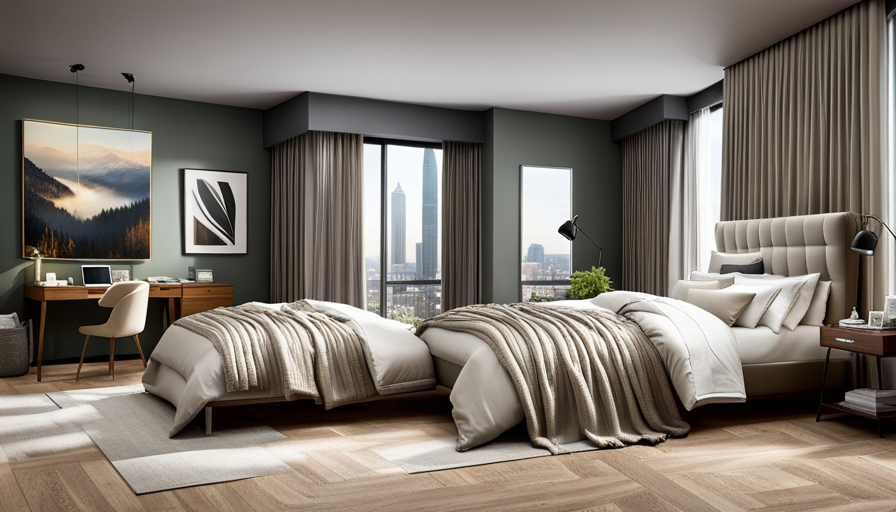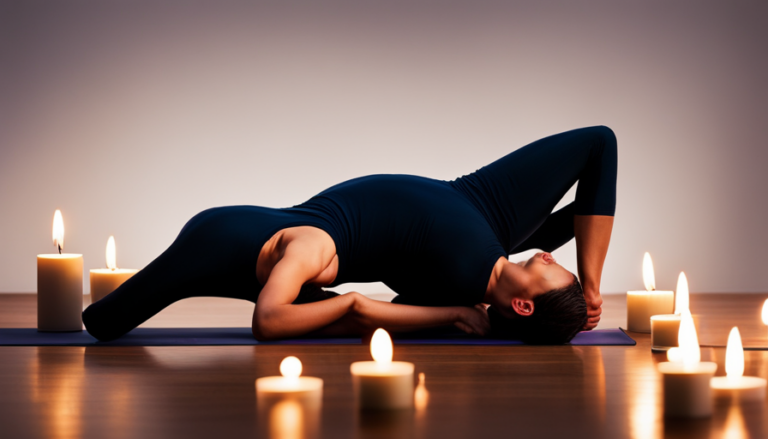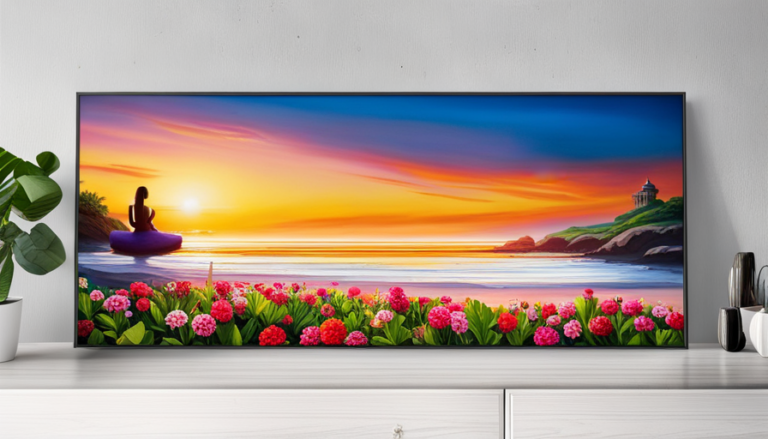How To Create A Stress-Free Sleep Environment
Are you tired of tossing and turning, unable to find the peaceful sleep you crave? Look no further! In…

Are you tired of tossing and turning, unable to find the peaceful sleep you crave? Look no further!
In this article, we’ll guide you through creating a stress-free sleep environment that will leave you feeling rested and rejuvenated.
Imagine stepping into a bedroom that exudes tranquility, where every aspect has been carefully designed to promote deep relaxation.
From the right lighting choices to decluttering your space, we’ve got all the tips and techniques to help you create the ultimate haven for restful slumber.
Key Takeaways
- Use calming scents like lavender or chamomile to promote deeper sleep.
- Opt for soft and warm lighting, and avoid electronic devices with blue light before bedtime.
- Declutter your bedroom and create a visually appealing and easy-to-clean environment.
- Find a comfortable and supportive sleep surface, including a pillow and mattress that suit your needs.
Importance of a Calm and Tranquil Atmosphere

Creating a calming and serene atmosphere is crucial for a stress-free sleep environment. When it comes to creating this peaceful setting, incorporating calming scents and soothing sounds can greatly enhance your sleeping experience.
Calming scents such as lavender or chamomile can help relax your mind and body, promoting a deeper and more restful sleep. You can use essential oils or scented candles to infuse these calming scents into your bedroom.
Additionally, soothing sounds like gentle rain or soft instrumental music can drown out any disruptive noises, helping you drift off into a tranquil slumber. Consider using white noise machines or playing nature sounds to create an ambiance of tranquility in your sleep space.
Choosing the Right Lighting for Restful Sleep
When it comes to achieving a restful sleep, you’ll want to make sure that the lighting in your bedroom is just right. Here are some tips on choosing the right lighting for a good night’s sleep:
-
Keep it dim: Use soft and warm light bulbs instead of bright overhead lights. This will create a cozy atmosphere that promotes relaxation.
-
Say no to blue light: Avoid using electronic devices with blue light, such as smartphones or tablets, before bedtime. Blue light suppresses the production of sleep hormones and can disrupt your natural sleep cycle.
-
Opt for blackout curtains: These curtains block out any unwanted outside light, creating a dark environment that signals your brain it’s time to sleep.
Decluttering Your Bedroom for a Peaceful Space

To achieve a peaceful and clutter-free bedroom, start by decluttering your space. Clear out any unnecessary items that are taking up valuable surface area or causing visual chaos. Keep only the essentials within reach, such as a lamp, alarm clock, and a book or two.
Use decorative baskets or storage containers to neatly store away any items that you don’t use on a daily basis. This will not only create a more visually appealing space but also make it easier to clean and organize your belongings.
Consider implementing organizing strategies like using drawer dividers or hanging organizers to maximize storage potential in your closet and dresser.
Creating a Comfortable and Supportive Sleep Surface
It’s important to ensure your sleep surface is comfortable and provides adequate support for a good night’s rest. Here are some key factors to consider when creating the perfect sleep environment:
-
Finding the Perfect Pillow: Look for a pillow that suits your sleeping position and provides proper neck alignment. A pillow that is too firm or too soft can lead to discomfort and disrupt your sleep.
-
Importance of Temperature Control: Maintaining a cool, comfortable temperature in your bedroom promotes better sleep. Consider using breathable bedding materials and adjusting thermostat settings accordingly.
-
Supportive Mattress: Your mattress should offer enough support to keep your spine properly aligned while also providing pressure relief. Choose a mattress type (such as memory foam or hybrid) that suits your preferences and body needs.
Incorporating Relaxation Techniques for a Restorative Sleep
Incorporating relaxation techniques can help you achieve a more restorative sleep experience.
One effective technique is practicing deep breathing exercises before bed. Take slow, deep breaths in through your nose, filling your lungs completely, and then exhale slowly through your mouth. This simple practice can help calm your mind and relax your body, preparing you for a peaceful night’s sleep.
Another technique to consider is aromatherapy. Certain scents like lavender or chamomile have calming properties that can promote relaxation and improve the quality of your sleep. You can use essential oils or scented candles to create a soothing environment in your bedroom.



